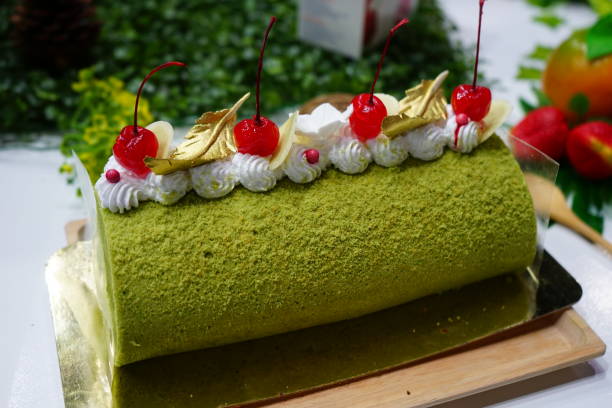Today, I’d like to talk to you about “Does Matcha And Green Tea Taste The Same?”. The world of green tea has attracted the interest of many tea lovers worldwide. Matcha and traditional Green Tea are leading the pack, both offering unique experiences beyond just a drink. Coming from the same Camellia Sinensis plant, Matcha and Green Tea have found their place in modern cuisine, which is appreciated for their distinct flavors and many health benefits.

Matcha is created from green tea leaves that are grown and processed specially, resulting in a finely ground powder. It is known for its vibrant color and intense flavor. Instead of steeping and discarding the leaves like traditional green tea, Matcha involves consuming the entire leaf, delivering a more concentrated supply of nutrients. This preparation process, which originates in centuries-old Japanese customs, provides:
- An earthy and slightly sweet flavor depth.
- Making it a flexible ingredient in various culinary creations.
- Ranging from lattes and smoothies to baked goods and savory dishes.
On the other hand, with its delicate, light, and refreshing taste, Green Tea has been a household staple and a part of tea ceremonies worldwide. Its popularity is attributed to its subtle yet complex flavor, which can vary depending on the region in which it is grown and the processing method. Steaming, pan-firing, or roasting the leaves can significantly influence the taste, resulting in a diverse array of green teas, each with unique characteristics.
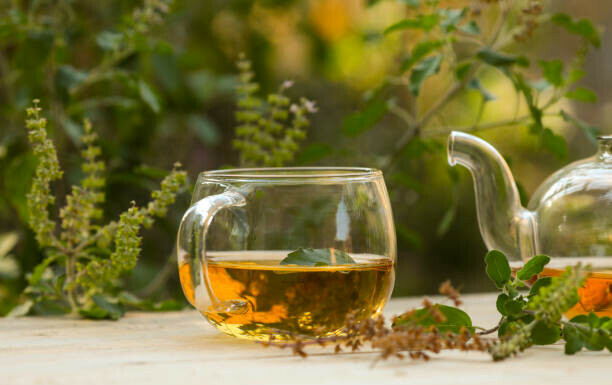
In recent years, Matcha and Green Tea have become more popular, not only as beverages but also as crucial ingredients in modern cuisine. The increase in health-conscious consumers has brought these green delights into the limelight. They are praised for their antioxidant properties, potential to boost metabolism, and ability to provide calm alertness thanks to the amino acid L-theanine. From Matcha-flavored desserts and snacks to Green Tea-infused sauces and dressings, the culinary applications are as varied as they are delicious.
This article takes a flavorful journey to compare the tastes of Matcha and Green Tea, exploring their individual characteristics, preparation methods, and the unique sensory experiences they offer. Whether you are an experienced tea lover or a curious newcomer, discovering the nuanced flavors of these green delights promises to be an enlightening and palate-pleasing adventure. So, immerse yourself in Matcha and Green Tea and uncover the subtle yet profound differences that make each sip a moment to savor.
The Essence of Matcha: A Distinct Flavor Profile
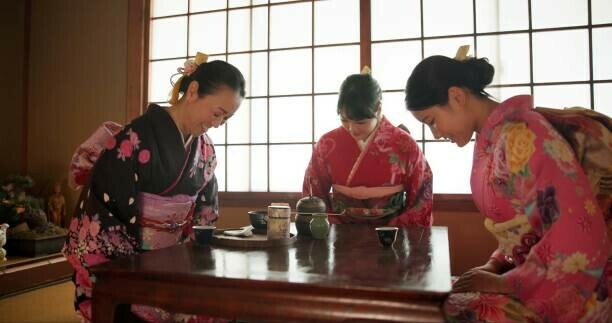
Matcha is not just a tea; it’s an experience, a ritual that connects you with centuries of tradition and the vibrant essence of green tea leaves. Producing Matcha starts with carefully growing the Camellia Sinensis plant, during which the leaves are shielded from sunlight for approximately three weeks before being harvested. This shading process enhances the chlorophyll content, giving Matcha its signature vivid green color and boosting the amino acids contributing to its unique flavor.
Once harvested, the leaves are steamed to prevent oxidation, then dried and stripped of their stems and veins. The pure leaf matter, known as tench, is then stone-ground into a fine powder. This labor-intensive process is essential in preserving Matcha’s delicate flavor and nutritional profile, setting it apart from other green teas.
The taste of Matcha consists of a balanced combination of umami, sweetness, and a touch of bitterness. The initial taste is often described as grassy or vegetal, a testament to its green tea origins. However, the umami—the savory, brothy taste—genuinely distinguishes Matcha. This rich umami flavor and the tea’s natural sweetness create a complex and satisfying taste experience that lingers on the palate. The slight bitterness, a characteristic of high-quality Matcha, balances these flavors, adding depth and dimension.
In the culinary world, Matcha’s versatility shines through. Its finely powdered form allows it to be seamlessly incorporated into various dishes and beverages. When whisked with hot water, it becomes a frothy, refreshing tea that can be enjoyed plain or sweetened. Matcha pairs beautifully with milk in lattes, creating a creamy, comforting drink that highlights its unique taste.
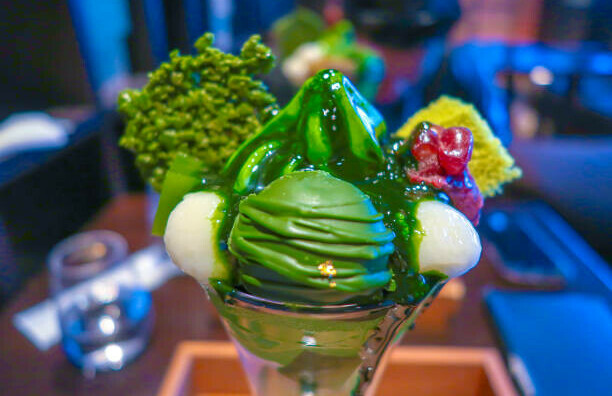
Beyond beverages, Matcha has found its way into many culinary creations. In desserts, it adds a distinctive flavor to ice creams, cakes, and pastries, where its earthy sweetness complements the richness of the other ingredients. Matcha can be used in savory dishes to enhance sauces and marinades, even as a seasoning, where its umami notes can elevate the overall flavor profile.
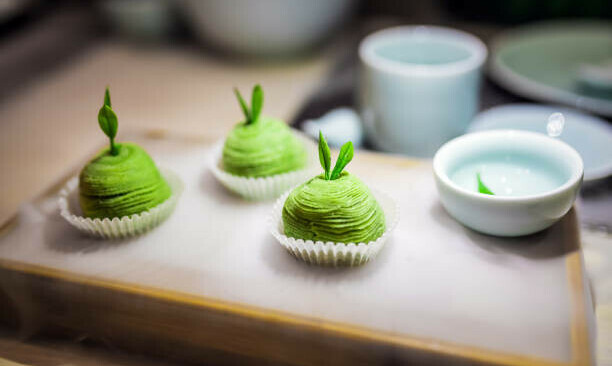
The influence of Matcha on culinary creations is profound, not only for its taste but also for the vibrant green hue it imparts, making dishes visually appealing and delicious. Whether enjoyed in traditional tea ceremonies or modern recipes, Matcha offers a taste experience that is as unique as it is delightful.
Understanding Green Tea: A Refreshing Tradition
Green tea has a rich history and provides a calming experience with its delicate flavors and significant health advantages. It is derived from the identical Camellia Sinensis plant Matcha and is well-known for its fragile nature and versatility. It provides a diverse array of flavors to accommodate various preferences. The creation of green tea, from leaf to cup, involves a meticulous process that showcases its unique characteristics and advantageous qualities.
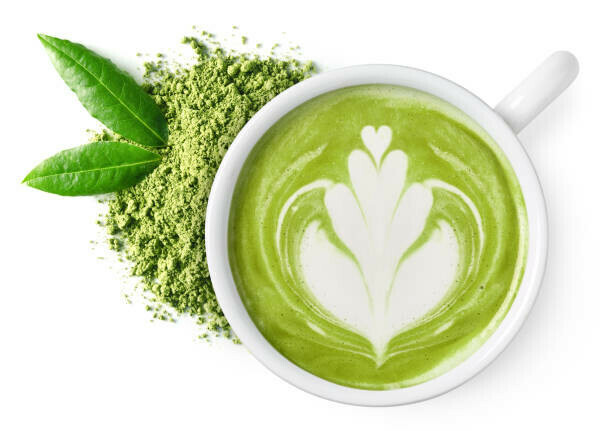
There are many types of green tea, each influenced by the cultivation region and specific processing techniques. Sencha, the most popular kind in Japan, is recognized for its fresh, grassy taste and revitalizing finish. Gyokuro, a shade-grown variety like Matcha, features a sweeter, more umami-rich taste due to its higher chlorophyll and amino acid levels. The Chinese Dragon Well (Longjing) offers a nutty, slightly sweet flavor with a smooth texture, reflecting the pan-firing method used in its production.
Typical green tea flavors are light and refreshing, often described as grassy, vegetal, or floral. Terroir, leaf age, and processing methods can affect these delicate tastes. However, it’s the balance of sweetness and astringency in high-quality green teas that truly sets them apart, delivering a clean and refreshing flavor that lingers pleasantly and is sure to be appreciated by tea enthusiasts.
The final taste of green tea is greatly influenced by the brewing time and temperature. Using water that’s too hot or steeping too long can result in a bitter, excessively astringent brew. Generally, green tea should be brewed with water at around 160-180°F (70-80°C) and steeped for no more than 2-3 minutes to maintain its delicate flavors and avoid bitterness. Achieving the precise balance of time and temperature can reveal the tea’s full potential, unveiling its subtle flavor profile.
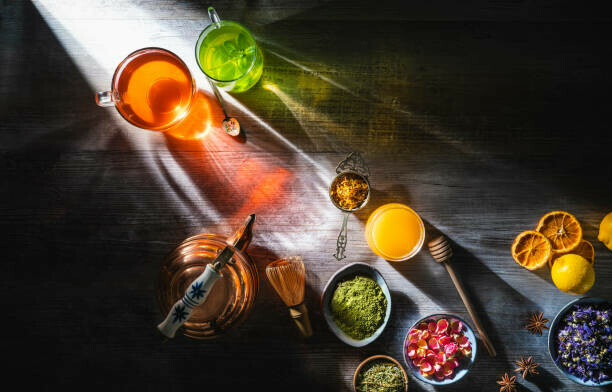
Green tea’s many health benefits are highly valued. Its abundance of antioxidants, mainly catechins, aids in maintaining heart health, increasing metabolism, and improving cognitive function. The amino acid L-theanine found in green tea promotes a relaxed state of alertness, making it a perfect choice for those wanting to unwind and stay focused. These health benefits and refreshing flavors have made green tea a popular drink known for its taste and healing properties.
Enjoying green tea goes beyond just drinking; it’s about embracing a tradition that combines taste and well-being, connecting you to centuries of culture and the enduring wisdom of nature.
Comparing Matcha to Green Tea: More Than Just Taste
Tea explores flavors, textures, and cultural importance, especially when comparing Matcha and traditional Green Tea. Their differences extend beyond flavor to include texture, chemical makeup, and cultural significance despite both coming from the same Camellia sinensis plant.
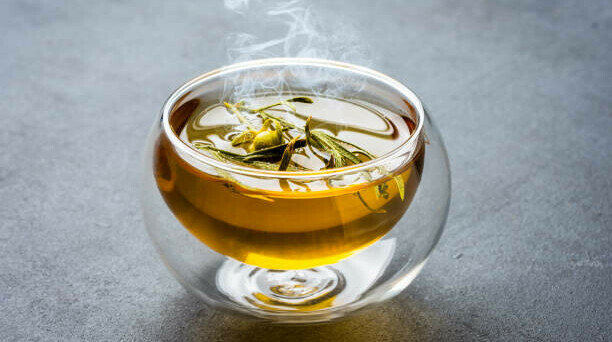
One of the most evident differences between Matcha and Green Tea is their texture. Matcha, finely ground into a powder, is mixed with water to create a frothy, dense beverage. This leads to a creamy, full-bodied experience that coats the palate and lingers, allowing the drinker to fully appreciate its complex flavors. In contrast, traditional Green Tea is typically prepared by steeping whole leaves in hot water. The liquid is clear and light, providing a more delicate, refreshing sip without Matcha’s robust mouthfeel.
L-Theanine, an amino acid found abundantly in Matcha and Green Tea, is crucial to their flavor and aroma. L-Theanine contributes to the savory taste, which is particularly noticeable in Matcha due to its concentrated form. This amino acid enhances the sweet and vegetal notes and contributes a subtle creaminess to the flavor profile. In Green Tea, L-Theanine helps balance the astringency and bitterness, resulting in a smoother, more harmonious taste experience.
Caffeine content also influences how these teas are perceived in terms of flavor. Matcha contains a higher caffeine concentration than Green Tea, as the entire leaf is consumed in powdered form. This results in a more intense, refreshing flavor that some describe as pleasantly bitter. With its lower caffeine content, Green Tea offers a milder taste, making it a preferred choice for those seeking a gentler, less stimulating beverage. However, the caffeine in both teas is complemented by L-Theanine, which promotes a calm, focused alertness rather than the jittery effect often associated with coffee.
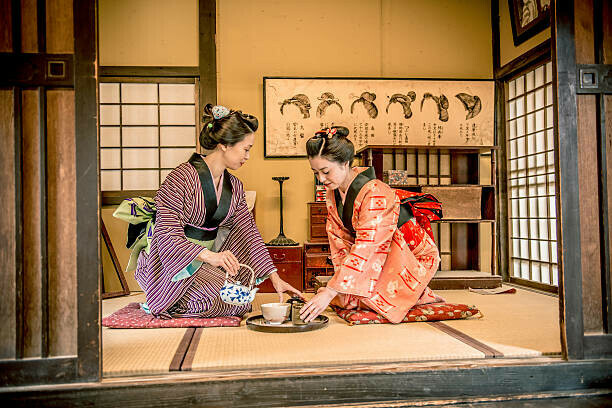
Cultural significance profoundly shapes the expectations and appreciation of both Matcha and Green Tea. In Japan, Matcha is unique in traditional tea ceremonies, symbolizing mindfulness, respect, and tranquility. This cultural context enhances the drinking experience, as each sip is infused with a sense of ritual and history. On the other hand, Green Tea is widely enjoyed across various cultures, each contributing its unique customs and interpretations. Whether it’s the formal Japanese tea ceremony, the casual Chinese tea gatherings, or the health-conscious choices in Western societies, Green Tea’s versatility and global presence influence how it’s perceived and enjoyed.
In conclusion, comparing Matcha and Green Tea goes beyond their taste, encompassing texture, chemical properties, and cultural importance. Each offers a distinct experience, inviting tea enthusiasts to explore their unique characteristics and the rich traditions they represent. Whether you prefer the robust, creamy texture of Matcha or the light, refreshing sip of Green Tea, both provide a journey of flavor and cultural discovery.
The Verdict: Savoring the Nuances

Regarding Matcha and Green Tea, every sip represents a tale of skill, heritage, and the precise balance of tastes. Although these teas share a common origin, their flavor profiles differ significantly, offering distinct experiences for tea lovers. Matcha, known for its intense, rich, and umami-packed flavor, delivers a bold, full-bodied taste that envelops the palate. Its creamy consistency, coupled with a subtle sweetness and a hint of bitterness, creates a complex flavor journey that is both stimulating and deeply gratifying. On the contrary, Green Tea offers a lighter, more refreshing experience. Its taste is characterized by a delicate fusion of grassy, vegetal notes with traces of floral and occasionally nutty undertones. Steeping produces a gentle yet flavorful beverage that is clear, and refreshing drink, making it an excellent option for those who enjoy delicacy.
For those trying Matcha or Green Tea for the first time, distinguishing between the two can be an enjoyable journey. To fully appreciate Matcha, prepare it traditionally with a bamboo whisk (chasen) to achieve a frothy consistency. Take note of the vivid green color and the smooth, velvety texture. As you savor it, allow the umami flavor to unfurl and notice the harmony of sweetness and bitterness. For Green Tea, use fresh, filtered water at a lower temperature (around 160-180°F or 70-80°C) to avoid bitterness. Steep the leaves for 2-3 minutes and observe the clear, light green liquid. While tasting, please pay attention to the refreshing, clean flavors and the subtle intricacy of its grassy and floral notes. By appreciating each tea mindfully, you’ll cultivate an understanding of their unique qualities.
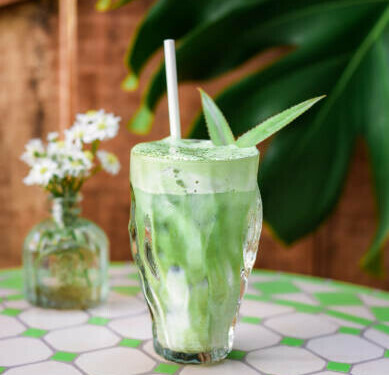
To fully relish Matcha and Green Tea, consider their versatility beyond traditional preparation. For Matcha, experiment with incorporating it into lattes, smoothies, or baked goods. Its robust flavor complements dairy or plant-based milk, creating a creamy, invigorating drink. Matcha-infused desserts like ice cream, cookies, and cakes offer a unique twist showcasing its distinct taste. With its lighter profile, Green Tea is perfect for various iced tea concoctions flavored with lemon, mint, or a touch of honey. It also pairs well with savory dishes, such as Green Tea-infused broths, sauces, or marinades, imparting a subtle depth of flavor.
Both Matcha and Green Tea provide numerous ways to be enjoyed, each delivering a unique sensory experience. Whether you favor the bold, earthy notes of Matcha or the delicate, refreshing flavors of Green Tea, immersing yourself in the distinct characteristics of these remarkable teas can elevate your tea-drinking journey into a rich and fulfilling exploration. So, delve into the world of green delights and relish the extraordinary flavors that Matcha and Green Tea have to offer.
Conclusion: Personal Preference and the Journey of Taste
At the end of the day, the decision between Matcha and Green Tea boils down to personal preference. It’s a delightful journey of taste that encourages you to explore and relish every sip. Both beverages offer distinct experiences, steeped in tradition and flavor, waiting to be uncovered by your taste buds. Matcha, known for its vibrant color and bold flavor, provides a stimulating experience, while Green Tea’s light, refreshing qualities offer a more subtle and soothing escape. Each tea has its own tale to tell, and your exploration of these flavors can become a personal adventure guided by your unique preferences and palate.

The beauty of taste lies in its subjectivity. What might be a profound umami experience for one person might be a light, refreshing delight for another. This diversity in taste makes delving into different teas compelling and fulfilling. There are no right or wrong answers, only personal revelations. Whether you are drawn to the creamy, earthy notes of Matcha or the delicate, grassy flavors of Green Tea, embracing your individual taste journey is what truly counts.
As you venture into this exploration, we encourage you to experience Matcha and Green Tea in various forms. Experiment with traditional preparations, lattes, iced versions, and culinary recipes. Each method opens up a new dimension of flavor, allowing you to appreciate the versatility and richness of these green treasures. By immersing yourself in different experiences, you’ll gain a deeper understanding and appreciation of what each tea brings.
We invite you to share your own encounters with Matcha and Green Tea. Have you found a favorite preparation method or a special recipe accentuating their flavors? Do you have a memorable moment associated with sipping one of these teas? Your stories and preferences contribute to the vibrant community of tea enthusiasts, enriching our collective journey. Comment below with your experiences, tips, and preferences, and let’s celebrate the wonderful world of Matcha and Green Tea together.
In tea, the journey holds as much significance as the destination. So, steep your tea, take a moment to savor every sip, and let your taste buds lead you on an unforgettable escapade through the flavors of Matcha and Green Tea. Enjoy the journey, and here’s hoping that each cup brings you a new revelation.
Thank you for reading my article about “Does Matcha And Green Tea Taste The Same?”, and I would love to receive your comments down below, in case of any.

